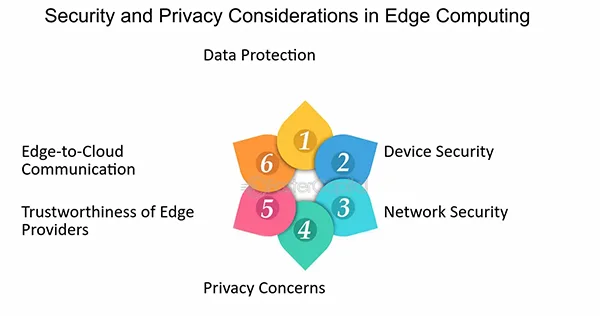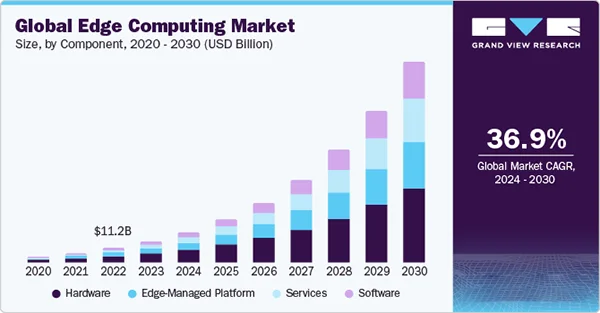Edge Empowerment: Elevating Your Network Experience with Innovative Platforms
Okay! Let’s open up with an absolute icebreaker.
Did you know that by 2025, 75% of data won’t be processed in the traditional data center? Instead, it would be processed in an edge computing system.
But, why does this even matter?
Well, if we recognize the pattern from the last few years, everything seems so connected and the data never stops moving.
This establishes the significance of a network being efficient and trustworthy to make sure that it matches the increasing requirement of a fast, speedy, and safe process.
And, that’s probably why the global edge computing market is estimated to reach $13.1 billion by the end of this year, as it greatly enhances the network performance.
So, in this read, we will together explore how edge computing platforms boost your network experience, delivering a strong business advantage. Also, learn about Key Players in OTT Advertising Platforms with this guide.
What are the Top Innovative Platforms For the Edge?
Edge computing is a distributed IT architecture that moves the data as close to the originating source as possible. This improves real-time response time, and faster insight, and significantly reduces the latency requirement.
Here, take a look at some best edge computing innovations that are impacting the network:
Edge AI

Handling a large amount is always difficult for an organization, and this is where edge AI comes in as a perfect solution. This involves using machine learning algorithms and other AI Models to provide accurate solutions for the vast amount of data.
This enables intelligent decision-making by efficiently analyzing the data and pattern recognition. On top of that, AI-based anomaly detection helps in identifying potential issues, further facilitating proactive measures.
Internet of Things

The IoT refers to the process of connecting physical data-sharing objects to the internet without any human intervention. It interconnects a wide array of devices and plays a crucial role in the data exchange process between them, improving the overall scalability of the project.
Here are some of the striking benefits of using IoT and Edge in tandem:
- This increases the response time and operational efficiency.
- A continuous business operation even after the connection is lost.
- Reducing the latency of the communication.
- Enhanced decision-making due to the analytics algorithms.
- Local data processing.
- And, improved network bandwidth.
5G

The introduction of 5G is another major thing for edge empowerment. It boosts the overall process by recognizing the need for high-speed and low-latency connections.
Additionally, 5G supports the adoption of bandwidth-intensive software and services at the edge, reducing the burden on centralized cloud infrastructure.
Blockchain

Blockchain technology has a decentralized nature that enables a secure recording and verifying of data exchange. It is a transparent system that ensures proper integration of data and reduces unauthorized access.
Here’s what blockchain technology can be used for:
- Digital data sharing
- Monetary transactions and processes
- Internet of Things (IoT)
- Monitoring supply chains
- And, Intellectual property and copyright protection
Another major advantage of combining blockchain with edge computing is that it allows secure data processing without any centralized or third-party server.
This secure data processing further helps in reducing the latency and improves real-time data management. It is an important process for applications that require quick response time autonomous vehicles, clever towns, and industrial automation.
Do You Know?
Cloud technology and edge computing are complementary and assume synchronization between a decentralized edge and a centralized cloud.
Enhanced Security and Privacy
In the traditional network, data has to go far to reach the central network, increasing the risk of interception or breaches. Edge computing on the other hand lessens this risk by dealing with the data locally.
That’s why an edge network platform should be innovative and include strong encryption methods and some security rules that protect data.
Also, saving data close to its origin makes edge computing a strong choice for industries that are dealing with confidential information and data.

Real-Time Analytics and Decision-Making
The ability to run systematic real-time analytics is a boon for many industries such as healthcare, finance, and manufacturing, requiring immediate actions and quick decision-making. And this is where edge computing platforms allow businesses to analyze and respond to the information right away.
For instance, in the healthcare sector, where devices with edge abilities can recognize the critical signs of patients and prescribe the right medication and actions.

Bottom Line
The significant boom in the edge computing network marks a major milestone in the IT industry that is rapidly revolutionizing the way we process and analyze data.
And as the business continuously embraces technical advancements, the future of networking lies in the adoption of edge computing. This leads to unlocking new business opportunities and increases the operational efficiency.








